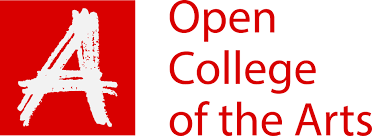“The term ‘documentary’ has come to cover a variety of genres (news, journalism, art). ‘Reportage’ has an equally ambiguous definition within the wider documentary arena. While some news coverage may be done in a reportage manner (on the ground, close to the action), generally speaking reportage is more closely related to a subjective way of storytelling than the more objective intentions of photojournalism. In reportage what is implied is a story from the point of view of one person, showing expression and movement, as though one is experiencing the story for oneself. This is in contrast to a more distanced style, often described as cold, which lends itself better to typology and other categorical and informative uses of the medium. – OCA Context and Narrative Course Notes
Before discussing specific practitioners of ‘reportage’ I want to revisit my take on the colour and black & white discussion. I have briefly touched on the subject as part of the street photography exercise and using it as a creative choice prior to capturing an image. Certainly this should be the case if you are presenting images as ‘art’.
 I’m not sure the likes of Robert Frank on his road trip for The Americans had a creative concept at the outset. At that stage in his career he was looking to be part of the Magnum group as he set of across America with his camera. It is possible that the ‘Americans’ concept and social critique only transpired on editing the images on his return. As a street photographer he just captured a reality that others hadn’t seen just by photographing as he travelled. Did he have an image in mind? A concept? Possibly not.
I’m not sure the likes of Robert Frank on his road trip for The Americans had a creative concept at the outset. At that stage in his career he was looking to be part of the Magnum group as he set of across America with his camera. It is possible that the ‘Americans’ concept and social critique only transpired on editing the images on his return. As a street photographer he just captured a reality that others hadn’t seen just by photographing as he travelled. Did he have an image in mind? A concept? Possibly not.
Did he have the choice of colour? No. That was in its infancy and not up to the standard required or accepted for his type of work. At some point in the mid to latter 20th Century colour was only regarded as suitable for advertising and family snapshots. It wasn’t a valid choice for street photography. William Eggleston and Joel Sternfield were early practioners of colour photography whose work started to be accepted as serious and entitled to hang on gallery walls.
 I have researched William Eggleston in the EYV module – Portraits and one of his best known works ‘The Red Ceiling’. So far I have established that Eggleston’s work is an insight to him and his world. His work tells as more about him that it does the subjects and scenes he captures. In interviews he shies away from explaining what the images are about. For the ‘Red Ceiling’ his main fascination was the colour red and how this could be printed with the techniques at that time. So not really reportage…
I have researched William Eggleston in the EYV module – Portraits and one of his best known works ‘The Red Ceiling’. So far I have established that Eggleston’s work is an insight to him and his world. His work tells as more about him that it does the subjects and scenes he captures. In interviews he shies away from explaining what the images are about. For the ‘Red Ceiling’ his main fascination was the colour red and how this could be printed with the techniques at that time. So not really reportage…

…Joel Sternfeld however brings reportage and colour together with my favourite work being American Prospects (1987). In an interview he explains that his work has a serious political side even though the images contain humour such a s McLean, Virginia, December 1978. The scene of firefighters tackling a blazing building while a single firefighter buys a pumpkin from a farm market stall. I read this image as a critique of government where time is spent on sideshow actions rather than tackling the real problems. He goes on to say “In the era of iPhones and prolific social media uploads a photographic artist can no longer simply be aesthetic”. This may be the reason he has used text to accompany images in his 1996 book On This Site and his latest as yet untitled work.
